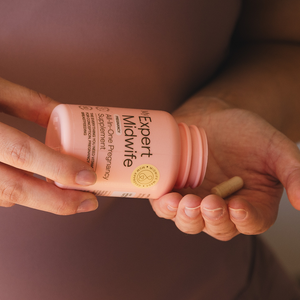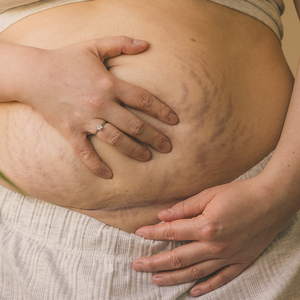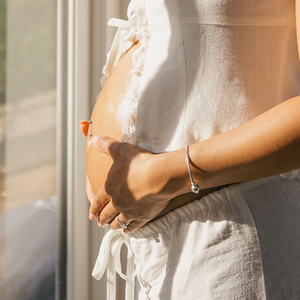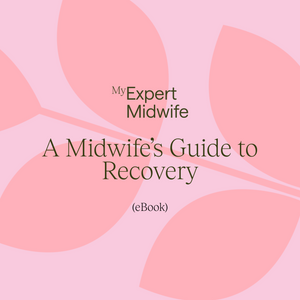Induction of labour (IOL) is a process where your labour is started artificially using a range of different methods. Approximately 20-30% labours in the UK are induced, obviously this varies from Trust to Trust, your Midwife or doctor will be able to tell you what your local rate is.
There are many reasons why you might be offered an induction of labour, usually due to pre-exisiting or pregnancy-related conditions relating to yourself or to your baby.
A normal term pregnancy is defined as 37-42 weeks. Different trusts in the UK offer induction for ‘post-dates’ at varying times after your expected due date (EDD), so check with your midwife or doctor about their local policies for this.
This blog will focus on induction of labour for post-dates (going over your due date). The evidence behind induction of labour for post-dates maturity suggests that:
* there is a small increase in the risk of stillbirth beyond 42 weeks
* meconium liquor (baby's first poo in the bag of waters surrounding them) is more common in babies who remain in utero beyond their due date. This can cause meconium aspiration where a baby breathes meconium into their lungs where it can cause a serious infection).The aim of induction is to have baby born by 42 weeks to reduce these risks so Trusts usually offer induction 7-10 days after due date.
The reasons for recommending induction of labour should be fully explained to you at your appointment with your doctor or midwife, but always ask your care providers for the evidence behind the reason they recommend induction of labour. This will enable you to weigh up the advantages and disadvantages, so you can make a fully informed choice for you and your baby.
Always remember that it is your choice to accept or decline the offer of induction of labour, as it is your body, your baby and your labour. Induction of labour often takes longer than your body going into labour naturally, as your body is being made to do something it is not yet ready to do.
There are several different procedures for inducing labour, and they often depend on:
* your medical history
* your pregnancy history (current and previous)
* how favourable your cervix is (a Midwife can offer a Vaginal Examination to assess your cervix prior to Induction)
Membrane sweep
This is also referred to as a ‘stretch and sweep’ or ‘membrane stripping’ and is usually offered after 40 weeks, but again is offered at different times based on individual cases. If you decide to accept, your midwife or doctor will do an internal examination by inserting one to two fingers into the cervix and sweeping around the opening and membranes. This action can help to stimulate the release of prostaglandins, which can help contractions to start.
The advantage is it may start labour off and reduce the need for any further intervention. The disadvantages are it may not work, some women find this procedure very uncomfortable, you may have sporadic contractions but not go into active labour, or it may be that your waters break during the examination.
Prostaglandin pessaries
These are artificial hormone-like activists that are used to try and replicate the natural process of softening and thinning down your cervix. It will be done in hospital where you and your baby can be closely monitored.
An internal examination is performed by a Midwife or Doctor and the prostaglandin is inserted next to the cervix. It may be in the form of a tablet, a gel, or small tablet attached to a string (think small tampon). This may start your labour without the need for further intervention, but the real aim of this is to soften and open your cervix to enable your waters to be broken. You may experience period-pain type cramps when this is inserted which is very normal, paracetamol can help if you find this too uncomfortable. The pains are often referred to as Prostin pains by Midwives and they may increase to become tightenings or contractions, or they may gradually disappear.
Some hospitals are happy for you to go home after insertion and return in 24 hours, or earlier if labour begins, however most hospitals recommend that you stay as an inpatient so that you and baby can be monitored if there are any concerns. If the first dose of prostaglandins does not work, you may be offered a second. It is unusual that the process does not produce some changes to your cervix.
Balloon Catheter
A Balloon Catheter is a mechanical method used to induce labour using a balloon inflated with a small amount of water that gradually stretches the cervix without the need for any medication. Once the balloon has been inserted inside the cervix it can be left in situ for several hours to help open the cervix and encourage the body to naturally produce labour hormones. This is a great method for anyone who is hoping to avoid induction of labour using medications.
Artificial Rupture of Membranes (ARM)
A vaginal examination is offered and if accepted the Midwife or Doctor can attempt to break your waters (the amniotic sac surrounding your baby) using a small sterile hook. It may be an uncomfortable procedure but should not be painful, if you do find it painful tell your Midwife or Doctor and they will stop. Once your waters are broken, you will be feel warm liquor running out. It may be a trickle or could be a gush, depending on how much water is in front of your baby’s head. Your Midwife will provide you with plenty of absorbent pads to place on your bed or chair, and a Maternity Pad is ideal to place in your underwear, as your waters will continue to leak until after your baby is born, remember to change it regularly to avoid sitting in a wet pad. It also helps you and your Midwife to monitor any colour change to your waters, which should be clear, or very pale pink and not green, brown or heavily blood stained.
Intravenous (IV) hormone drip
The next step, if active labour has not started with the previous procedures, is to insert a cannula into your vein and start a hormone drip called syntocinon, which is the synthetic version of your own hormone, oxytocin.
This is started off very slowly and gradually increased until you are having regular contractions. The drip will be stopped soon after your baby is born or sooner if there are any concerns with you or your baby.
Due to your labour not starting naturally, it will be recommended that you have continuous monitoring of baby’s heartbeat and your contraction pattern via a monitor to see how your baby is coping as well as ensuring you do not hypercontract (more than 4 contractions in 10 minutes). This can mean that moving freely around in labour may be more difficult, although most hospitals have wireless monitors available for you to use which can help you to stay upright and active during labour.
Summary
Your labour may be induced using different methods and, very often, using a combination of several of the methods described in this blog. Whether you are being induced for ‘post-dates’ or for other reasons, the induction process will be similar.
As an individual, you have the right to choose and decide what is acceptable for you during your pregnancy, labour, birth and post-birth period. Your midwife and/or doctor should be able to objectively discuss with you the reasons for offering induction of labour. It is for you to consider your options and any attached risk factors and decide which is the right pathway for you and your baby.



















